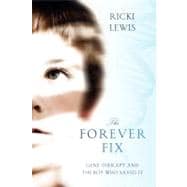
Note: Supplemental materials are not guaranteed with Rental or Used book purchases.
Purchase Benefits
What is included with this book?
RICKI LEWIS is a Ph.D. geneticist, journalist, professor and genetic counselor. The author of one of the most widely used college textbooks in the field (Human Genetics: Concepts and Applications, now in its 10th edition), she has also written hundreds of popular pieces on science and other topics for trade and specialized magazines, including Nature, Discover, and The Scientist.
The New copy of this book will include any supplemental materials advertised. Please check the title of the book to determine if it should include any access cards, study guides, lab manuals, CDs, etc.
The Used, Rental and eBook copies of this book are not guaranteed to include any supplemental materials. Typically, only the book itself is included. This is true even if the title states it includes any access cards, study guides, lab manuals, CDs, etc.